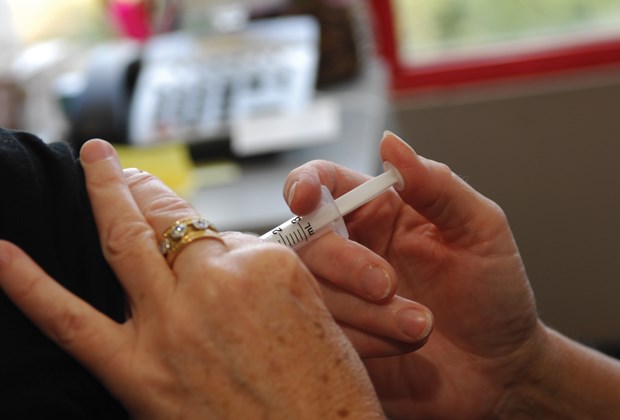Vaccination rates for school-aged children on the North Shore are among the lowest in both the Vancouver Coastal Health region and the province as a whole.
Mark Lysyshyn, medical health officer for the North Shore, says that's concerning, particularly in light of a recent measles outbreak in parts of the Fraser Valley where immunization rates are also low.
On the North Shore, only 86.7 per cent of kindergarten students are protected from measles by vaccination, compared to 91.7 per cent for the Vancouver Coastal Health region as a whole.
Lysyshyn said in order to protect the population as a whole, immunization rates should be over 90 per cent - particularly with a very infectious disease like measles.
"Measles has really bad outcomes in one of every 1,000 cases," he said. "That really bad outcome could be death."
Measles can also cause inflammation of the brain that can lead to lingering problems, said Lysyshyn.
Measles is only one of the diseases for which vaccination rates aren't as high as they should be, he said.
Rates seem to be low for a number of diseases that require multiple shots to ensure immunity, he said.
Pertussis - or whooping cough - is one of those. Children need to get several doses of the vaccine for it to be effective. But on the North Shore, that's only happening in 69 per cent of children.
"There is pertussis circulating around the North Shore," said Lysyshyn. "We're concerned about that. In older people, it usually doesn't kill anybody. In very young children, it can."
The information about vaccination rates comes from a survey by the health region.
Lysyshyn said vaccination rates on the North Shore have been low for a number of years - and actually have been improving, just not fast enough.
Lysyshyn said he doesn't know why vaccination rates are low here. Answers could range from not enough immunization clinics being offered to people being too busy, he said.
Data shows protection levels are strongest for diseases requiring only one vaccination. That seems to indicate "there's a lot of good efforts when babies are really young," said Lysyshyn. But when children get older, "those rates fall off," he said.
Lysyshyn said health officials are making changes to try to get immunization rates up - like increasing the number of catch-up vaccines offered in schools at later grades and offering summer immunization clinics.
Some parents may be choosing deliberately not to vaccinate their children - either on religious grounds (as in parts of the Fraser Valley), misconceived notions about the science behind vaccines or suspicions about the vaccine production industry, Lysyshyn acknowledged.
Health authorities removed the anti-bacterial agent thimerosal - which contains mercury - from single-dose childhood vaccines after concerns were raised about possible links between it and the development of autism. That link has now been discounted by a number of subsequent medical studies, said Lysyshyn but none of the vaccines against childhood diseases contain thimerosal. (There are still small quantities of it in flu vaccines and some hepatitis B vaccines.)



